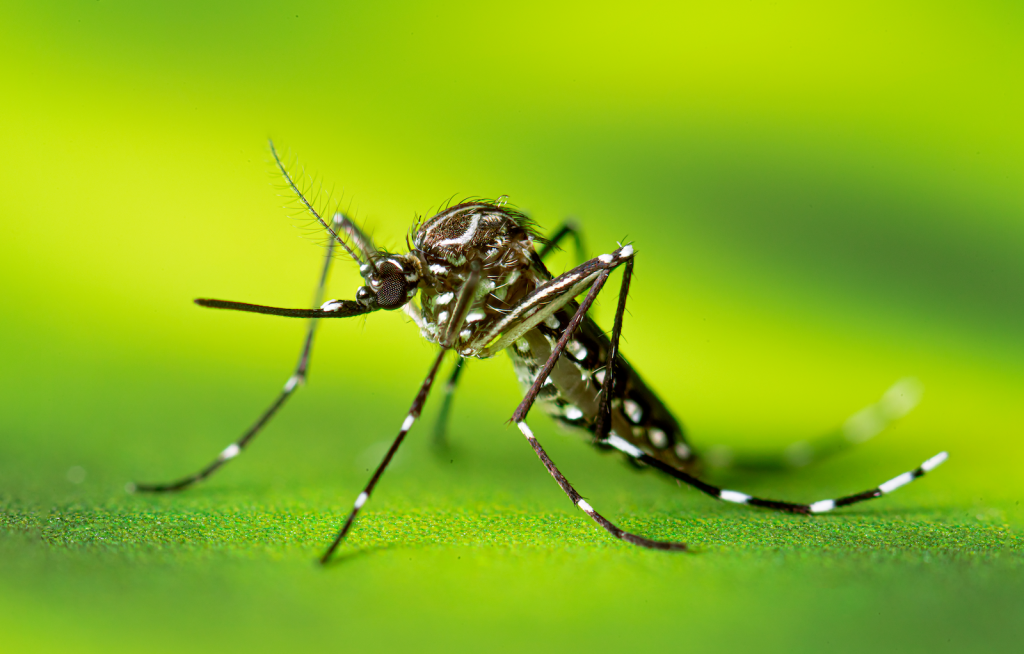Aedes aegypti mosquitoes found in Jackson County, but health risk is low
Published 3:00 pm Thursday, August 29, 2024

- Aedes aegypti adult mosquito. The species believed to have originated in Africa was recently found in Jackson County, according to health officials. It marks the first time the mosquito species was discovered in Oregon, but officials say that risk to locals is low.
A type of mosquito that most likely originated in Africa has been found in Jackson County — a first for the state of Oregon, according to health officials.
Oregon Health Authority, Jackson County Vector Control and Jackson County Public Health Division confirmed the identification of Aedes aegypti (Ae. Aegypti) mosquitoes in the county, according to a news release issued Thursday.
Health officials say there is little risk to locals.
“Aedes aegypti mosquitoes are a concern in the United States because they can carry and transmit various diseases that can have serious health consequences such as Zika virus, chikungunya, dengue and yellow fever,” Emilio DeBess, state public health veterinarian based at OHA’s Public Health Division, said in the release. “The risk of these infections to local residents is low and depends on the presence or arrival of someone who is currently infected with one of these diseases after infection outside the U.S.”
DeBess added there have been no reports of anyone having acquired viruses from Ae. aegypti mosquitoes within Oregon.
Oregon Capital Chronicle reported Thursday that the first mosquito was found July 23 in Talent, according to Jackson County officials. Since then, officials have found 77 specimens in 18 traps in northwest Talent. It’s unclear why it took the health authority a month to announce it to the state, the Chronicle reported.
“Jackson County Vector Control identified the Ae. aegypti mosquito as part of its routine mosquito surveillance, which monitors different mosquito populations in the county and tests for diseases such as West Nile virus and Western equine encephalitis that are common to the Culex mosquito genus,” the Thursday release said. “Mosquito surveillance provides Jackson County Vector Control the ability to determine human risk and implement strategies to control these insects and prevent disease spread.”
According to health officials, adult Ae. aegypti mosquitoes are relatively small and have a black-and-white pattern due to the presence of white/silver scale patches against a black background on the legs and other parts of the body. Ae. aegypti mosquitoes most likely originated in Africa, and since then, the species has been transported globally throughout tropical and subtropical regions, and parts of the temperate world, through global trade and shipping activities.
“Ae. aegypti cannot fly far, only about 500 feet,” the release said. “These mosquitoes prefer warm and wet weather, and to live in or near homes or in neighboring woods. Changes in climate are allowing Ae. aegypti mosquitoes to expand their range to the western United States.”
The mosquitos primarily feed in the daytime and prefer to feed on humans, health officials said.
John Mahan, chief medical officer of Jackson County Health & Human Services, said, “Jackson County Vector Control and Jackson County Public Health are working closely with OHA and vector-borne disease specialists regarding control of these mosquitoes and risk-reduction approaches.”
Invasive Ae. aegypti mosquitoes need only a quarter-inch of water to complete their life cycle, the release said. “The key to preventing these mosquitoes from becoming an established vector in Jackson County will be to eliminate standing water, even small amounts, and moisture from yards and gardens. Common mosquito breeding sources include flowerpot saucers, tires, kiddie pools, rooted plants in water, containers/buckets, and pet water bowls.”
“Many prevention methods that work for other types of mosquitoes apply to Aedes aegypti,” said Geoff Taylor, manager of Jackson County Vector Control.
Those methods include:
• Dumping or draining any standing water around the home.
• Removing containers or objects that can hold water from your yard, such as water saucers from under plants, old tires, tarps, buckets, containers, toys, and other equipment.
• Repairing leaky outdoor faucets.
• Keeping rain gutters cleared.
• Covering, screening, or removing rain barrels, trashcans, bins, buckets, or tubs.
• Wearing mosquito repellent outside. Repellents containing DEET, picaridin, IR3535, some lemon eucalyptus, and para-menthane-diol products are most effective at preventing mosquito bites.
• Sleeping under a mosquito net when outside or in a room without screens.
“Discovery of Aedes aegypti underscores the importance of our mosquito trapping system,” DeBess said. “Tracking and monitoring the types of mosquitoes that exist in Oregon communities is critical. This, in turn, helps us identify potential public health implications and implement measures to reduce risk.”
For more information:
- Aedes aegypti, Centers for Disease Control and Prevention (CDC): https://www.cdc.gov/mosquitoes/about/life-cycle-of-aedes-mosquitoes.html
- Potential range of Aedes mosquitoes, CDC: https://www.cdc.gov/mosquitoes/php/toolkit/potential-range-of-aedes.html
- Aedes aegypti in California: https://www.cdph.ca.gov/Programs/CID/DCDC/pages/Aedes-aegypti-and-Aedes-albopictus-mosquitoes.aspx
- Jackson County Vector Control District: https://jcvcd.org/
- JCVCD’s Aedes aegypti page: https://jcvcd.org/mosquito/aedes-aegypti/






